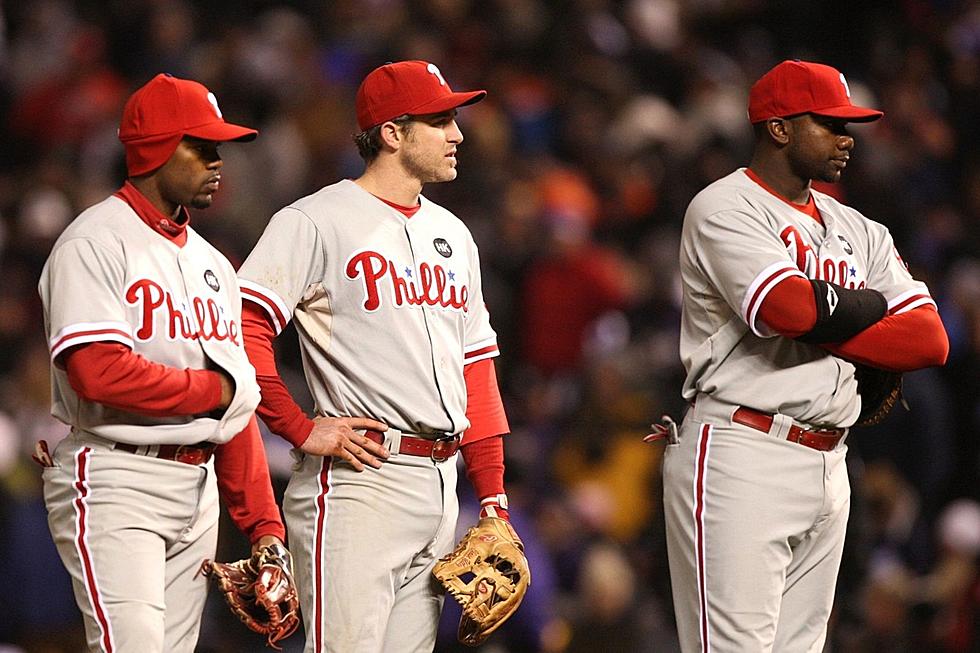
Billy Beane: 1993 Philadelphia Phillies Inspired “Moneyball”
In case you're not aware, Philadelphians are pretty averse to sabermetrics, advanced stats, complex algorithms, and anything else that undermines the end-all savvy of their "trained sports eyes." (And/or Ryan Howard) They think they know -- they'd argue that they know they know -- what they're seeing, before and better and beyond any number on any page can.
Especially if the man holding the page is Oakland GM Billy Beane, which is really funny, given that Beane recently called Philadelphia ground-zero for his game-changing innovation.
"I was right here in Philadelphia watching the World Series,” Beane told the Philadelphia Inquirer at Friday’s panel on “Moneyball’s Impact on Business and Sports." "Those '93 Phillies took a ton of pitches, walked a ton, and scored a ton of runs. That’s when it hit me."
In other words: John Kruk and Darren Daulton and Lenny Dysktra and Co., proved the inspiration for what later became Philadelphia's foremost allergy: Moneyball.
Some notes, courtesy of Corey Seidman (CSN Philly):
"Those Phillies led the National League by walking in 10.2 percent of their plate appearances. The team’s aggregate .351 on-base percentage also led the NL.
Of the 11 Phillies to compile 300 or more plate appearances in ’93, six had OBPs of .360 or higher. Four players -- Kruk, Darren Daulton, Lenny Dykstra and Kevin Stocker -- were above .390.
The 2001 Athletics – the team depicted in Michael Lewis’s “Moneyball” and later in Bennett Miller’s film – had four regulars record .360-plus on-base percentages. Only two were above .390, brothers Jason and Jeremy Giambi. Oakland’s .345 team mark that year was six points lower than the OBP of the Phillies.
Both teams spent little relative to the rest of the league. Jim Fregosi's pennant-winning squad had the seventh-lowest payroll of any non-expansion team. Art Howe's 102-win A's had the second-lowest."
More From 97.3 ESPN



![Watch ‘Top Gun: Maverick’ Star Miles Teller Throw Out First Pitch at a Phillies Game [VIDEO]](http://townsquare.media/site/398/files/2022/06/attachment-Rooster-Pic.jpg?w=980&q=75)





